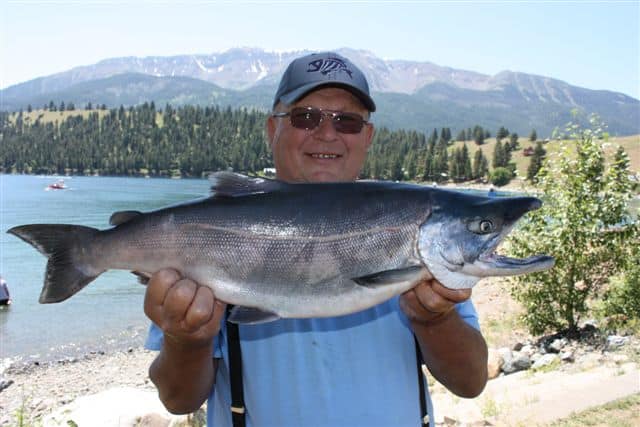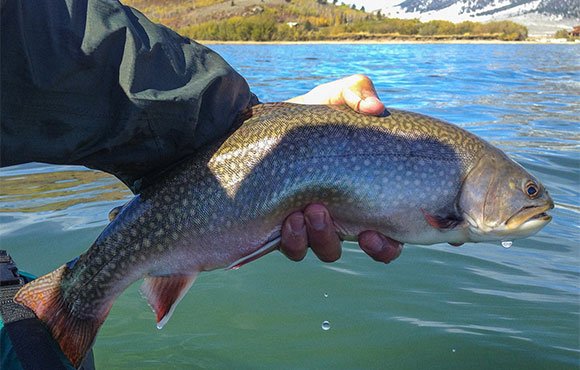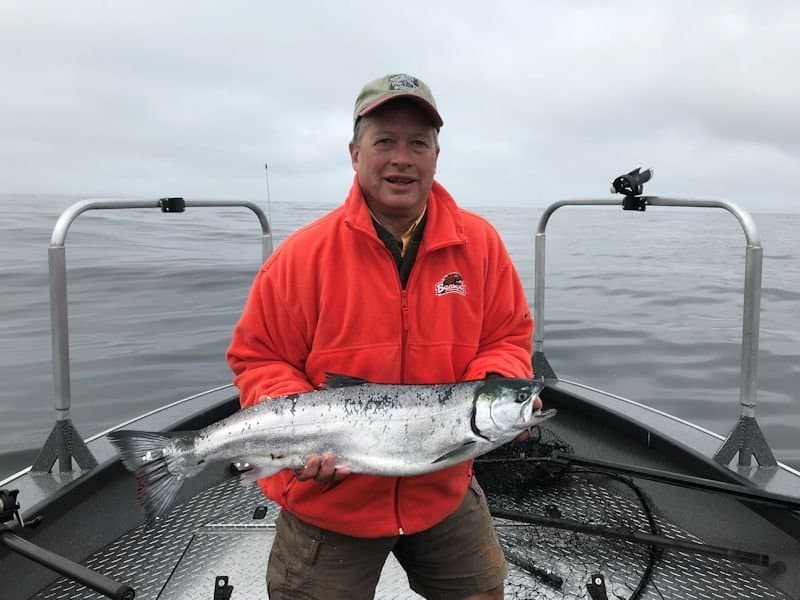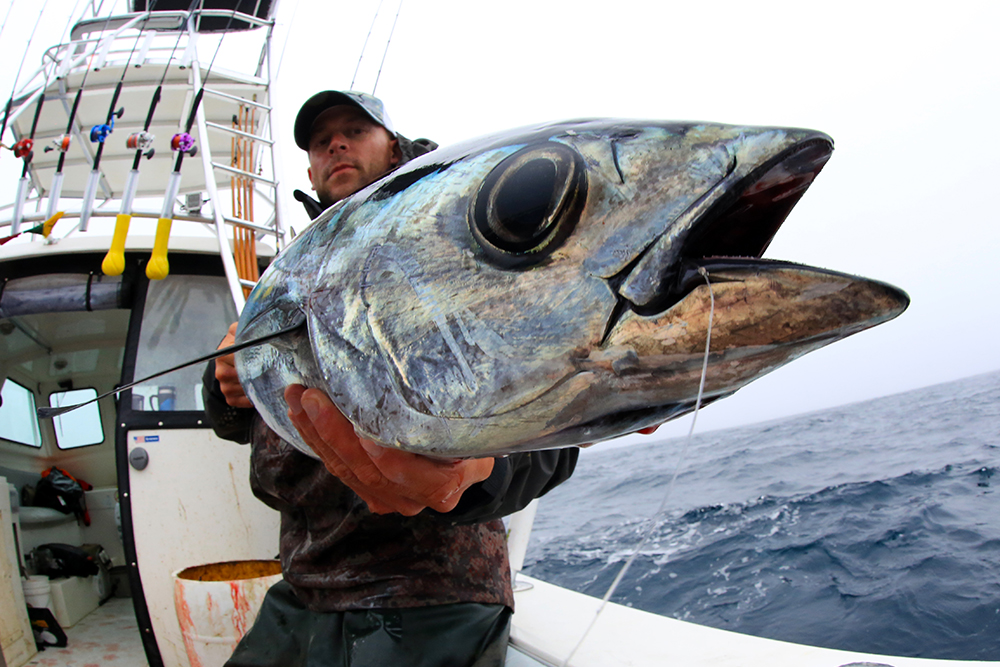2021 is shaping up to be a very special outdoor year in the Northwest.
Fishing’s hitting on all 8 cylinders right now.
That spring chinook bite I promised in the June blog entry materialized in the lower-Willamette. I faithfully followed my own advice, mostly, by launching at Cathedral Park at the St. John’s Bridge and then motoring downriver to the powerlines and trolling 3.5 spinners behind 360 flashers. The only change has been running 16 ounce leads on the forward rods and 12’s on the back rods (those closest to the transom). I put the back rods out first and follow with the forward rods. We haven’t had a single tangle and we’ve caught fish on every trip! It’s been a phenomenal springer season and we didn’t start fishing springers until the second week of June!
I’m told this should last through the month of July…we’ll see but so far, so good. We’re starting at the Power Lines and then moving down near the mouth after a few passes to take advantage of the cooler water leaching in from the Columbia. Most days we’re headed to the office around 9:00AM…it’s a first light bite and not much happens after 9AM.
The Columbia’s been good for Chinook. That season will close soon on July 5th from the Astoria Megler Bridge upriver to Bonneville Dam, however the Columbia in the same stretch of river is open to summer steelhead and sockeye salmon through the end of the month (31st). You have until the end of the month (7/31) for Chinook, steelhead and sockeye if you’re fishing above Bonneville Dam to Pasco, WA.

The ocean’s open for Chinook from Ledbetter Point in Washington south to Cape Falcon at Manzanita. The same area opens for coho on June 27th. This is a quota fishery so when the quota’s caught it’s over but for now it’s wide open and early indications are pointing to a very good fishery this year. South of Cape Falcon it’s been open and fishing’s been good out in the ocean for a variety of species including salmon.
Same is true up the Washington coast. It’s open for Chinook and depending on where you fish from Westport north to LaPush and Neah Bay it’s open for Chinook and Coho on July 4th, some areas a few days earlier.
This is going to be a salmon-year! A huge return of coho has been forecast and there’s no reason to believe they won’t show. These fish will mill around out in the ocean until August then start making their way inland as a trickle in August and in waves by September.

There’s been decent catches of kings just north of the Columbia along the Long Beach Peninsula…this is a very good sign of things to come!
For this or any fishery in the Northwest, check the regulations before wetting a line. Barbless hooks are required in some areas and not in others and double checking season opening and closing is always a good idea.
Catch and release sturgeon fishing’s been good in the Columbia. Some areas very good. Same for the lower-Willamette in the area of the Portland Harbor from Swan Island downriver to the mouth. We’re seeing good numbers of sturgeon on our fish finder in the lower-Willamette and very light fishing pressure.
Shad fishing will be winding down in the Columbia but there should still be plenty of action with at least a couple million more expected and roughly half the run in by late June. You can catch these from the bank below Bonneville Dam on both sides of the river. As I write this entry on the last day of June the catching has been “consistent all day long” up in the Oregon City area.
High lakes trout fishing’s in full swing. Check with the local ranger station to confirm access but everything should be snow-free and open, especially following this hot-spell we’ve had. This was once one of the most popular fishing getaways in the region and it’s been somewhat forgotten. That’s your cue to take advantage of the opportunity because these lakes, if the fish aren’t naturally reproducing in them, they’re stocked. In either case there’s fish to catch! Tough to beat a black ¼ or 1/6 ounce Roostertail spinner or ¼ ounce gold Panther Martin spinner in these lakes. There are literally hundreds of productive lakes to choose from.
Washington State’s made it even easier by identifying trout lakes that are “overabundant” aka stuffed with trout. Check out their website and start looking for new water to fish.
Kokanee have finally received the attention they deserve. Overlooked for way too long, this fishery is one of the region’s focal species thanks to its excellent eating and abundance. Lake Merwin, Lake Stevens and Lake Roosevelt are powerhouse options in Washington and in Oregon there’s record-setting Wallowa Lake, Paulina Lake and Odell Lake to get you started but there’s plenty more if look. The Northwest has earned its place as one of the very best kokanee destinations in the world and for good reason with fish over 9 pounds landed!
Walleye’s been another strong, world-class fishery. The Rufus-area on the Columbia is tough to beat but you’ll find them in various lakes in Washington too. Also, upriver to the Tri-Cities area is a well-known stronghold for these tasty, thriving fish. During the summer months trolling plugs and worm-harnesses is the go-to tactic for most walleye enthusiasts. You’ll also find them in the Willamette from the Falls to the mouth and in Multnomah Channel which means you’ll likely find them sprinkled throughout the lower-Columbia maybe as far west as Clatskanie.
With unseasonably hot weather the offshore fishery for albacore tuna should kick-in sometime in July. The key is finding the right water, 63 degree blue water, is ideal. And if the currents cooperate it could come as close as 20 miles offshore. If you haven’t done it before, hire a charter and if you have you should know all the safety protocols to follow so you have a safe trip over and back to port.

Crabbing’s year round and ocean crabbing can be phenomenal. South of Cape Falcon all the way to Humbug Mountain it’s open for “nearshore” halibut inside the 40 fathom line. At times halibut fishing can be quite good just outside Nehalem Bay in 50’ of water. The Nehalem Bar is particularly treacherous so only venture out when conditions allow, generally only on an incoming tide. A “soft tide” is best when there’s little exchange between high and low tide. Still, you’re well-advised to stay close to the bay if the weather or tide changes and the bar going into Nehalem Bay starts to get lumpy. In July a good play is to drop half a dozen crab traps just north of the Nehalem Bay entrance in 30’ to 40’ of water and then fish nearby in 50’ to 75’ of water using herring for halibut. This year, out around the 200’ line, there should be lots of coho showing later in the month in the same area.
If the ocean’s not your thing and you still want to chase salmon then I recommend Neah Bay. At times the fishing for black sea bass and other rockfish can be exceptional. After July 4th it opens to coho. This area can deliver some of the best coho catching anywhere in the lower-48. Traditional trolling methods work but frankly we’ve had far more success locating on tide rips and vertical jigging Buzz Bombs. This is a beautiful, secluded area. It takes a while to get there so plan on a day-over and day-back unless you get going really early. We’ve found good, dependable tide rips just out and around the corner from the Neah Bay harbor…you don’t have to go far and the fish ball up on these rips in the bigger tide sets.
For a real change of pace maybe warmwater fishing’s the better choice. Again, there are literally hundreds of exceptional opportunities across the region. Crappie, bluegill, catfish and other types of panfish (ie yellow perch, warmouth, pumpkinseed) are abundant throughout the region. If you have a small boat, from a kayak or canoe up to an 18’ powerboat, Silver Lake in Western Washington is a good bet. Just east of Castle Rock off I-5 it’s an easy drive for anglers from Olympia or Portland. The lake is loaded with crappie and is a solid bet for largemouth bass among other species.

Lake Washington is another strong go-to for yellow perch. It’s one of several lakes in the area that have plenty of these tasty fish to harvest. Others include Lake Sammamish, Lake Stevens and American Lake, all are within close proximity to Seattle.
And finally, if these weren’t enough options to consider for July, add sockeye salmon to the list. These tasty little salmon have rebounded nicely and July’s the month to chase them in the Columbia. Drop your anchor in 10’ to 15’ of water and using a 2’ dropper for your lead, fish a small X4, X5 or F7 Flatfish in metallic red on a 3’ leader on an outgoing tide anywhere from Sand Island up to Bonneville Dam. Flatfish work best in low velocity water and have a wider wiggle that sockeye really like. Some prefer using a coon shrimp tail threaded onto a size 4 red octopus hook with a small metallic red Spin-N-Glo body ahead of it. The key to catching sockeye is keep it small and red. In some of the troll fisheries they use a kokanee dodger with short leader (18” to 20”) and red hook…that’s it!
And for you hunters, you know what to do. It’s a good time to get out and scout.
For all outdoor enthusiasts, given the crazy weather we’ve had so far this year, please be careful in the backcountry. Unless something changes in our weather pattern, and that’s unlikely, it’s going to be tinder-dry in the woods.
Hopefully, this inspires some ideas for your July. We’ll continue to stay in touch as the summer outdoor season continues to materialize. Check back soon! Have fun and be safe!